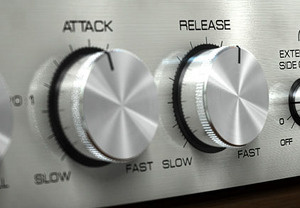|
....the end of some rubber tubing stuck into a vent hole of a tom, with the other end stuck in your mouth. Put some air in the tom while gently striking it. Adjustable tones for days. Fun stuff.
0 Comments
what does the attack & release knobs do on a compressor? |
Do you like vintage recording gear and articles? You should visit our sister site: The Vintage Audio Portal!
**Advertise With Us! We have thousands of visitors a day. Contact us here to learn more.
Archives
August 2021
Categories |




